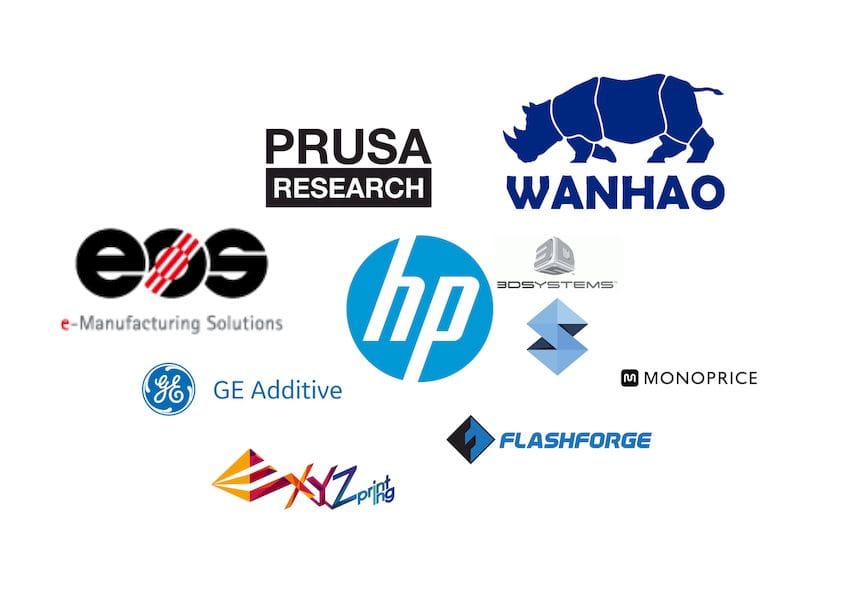
An interesting report by Context reveals the “top five” 3D printers.
I always find these reports quite interesting because they show which manufacturers are the most successful at building their businesses. This cuts around the hype, advertising and other promotional bits that put products into the public eye.
What truly counts is whether people are actually buying their machines. And that’s what this report demonstrates.
If someone were to ask you which companies topped the “big iron” category of 3D printing, who would you guess would be there? It turns out the top ten in annual equipment sales revenue are:
- Stratasys, USD$405.5
- EOS, USD$240.4M
- GE Additive, USD$145.9M
- 3D Systems, USD$123.3M
- HP, USD$97.3M
These are legitimately, “the big guys” in the space.
There are some things to note here. First, GE Additive appears third on the list, and this is due to their accumulation of multiple 3D printer manufacturers, including Arcam and Concept Laser, who together have built a formidable operation providing significant 3D printing equipment to the world. GE’s network of manufacturing operations won’t hurt, either.
The other note is that HP appears on the top 5 lists. This is a company that didn’t sell any 3D printers only a couple of years ago, and now they’ve somehow ended up in 5th place – with an absurdly high growth rate of 7760%. GE Additive boasts a growth rate of a healthy 39% for comparison.
That’s quite different than the -5 and -6% growth rates of Stratasys and 3D Systems, respectively. It seems that the newcomers are catching up to the oldsters quickly.
Context also provided a list of the top 5 desktop 3D printer manufacturers, and we can observe similar patterns. Here’s that list, which counts units shipped, rather than dollars sold:
- XYZprinting, 81,840
- Monoprice, 80,156
- Prusa Research, 39,264
- Wanhao, 35,263
- Flashforge 19,829
I’ve seen XYZprinting on the top of this list in previous years, so it’s no surprise to see them there again. The Taiwan-based company is quite large, with a worldwide sales network and thus easily able to sell large quantities of their low-priced units.
Monoprice is a big surprise, as many don’t even count them as a 3D printer manufacturer. In fact, they are not, but instead contract existing manufacturers to produce equipment with their label on them. Nevertheless, their rock-bottom pricing clearly has created a big attraction for their product line. That said, you have to sell an awful lot of units at their price level to make a decent profit. To put this in perspective, you might make a margin of only USD$25 on a USD$199 machine, so sales of 80,000 units might net you only USD$2M in gross profit.
In third position is Prusa Research, the open source company that seems to be doing everything right. Their machines are relatively inexpensive and “just work”, which I think is the real attraction to their gear. What’s even more interesting is that their rate of expansion is said to be 523%, which is in line with our understanding of their recent factory expansion. It’s very likely they could double their volume for this year and perhaps put themselves in first place. Combined with XYZprinting’s mere 1% growth rate, this might be an interesting race.
Wanhao and Flashforge, both long time Asian manufacturers, round out the top five.
But let’s talk about something else: the companies who are NOT in the top five.
We do not see several notable high profile desktop 3D printer companies present in the list of top 5 shippers. Names such as: MakerBot, Ultimaker, Formlabs come to mind. These are companies we’ve seen for many years, but evidently they each sell fewer machines than Flashforge, who are in fifth spot at “only” 19,829 machines.
These companies may be selling only 1,000 machines or fewer per month, but the thing to remember is that their pricing is quite a bit higher than the low-priced manufacturers topping the list. A USD$4000 machine might have a margin of USD$1200, so selling 12,000 of them in a year would yield USD$14.4M, far higher than Monoprice and likely others on the top 5 list.
But this is only a datapoint in the long evolution of the 3D printer industry. Next year, there will be changes, as always.
Via Context

